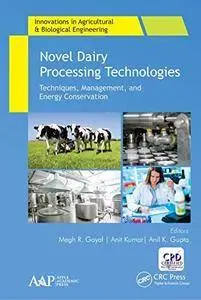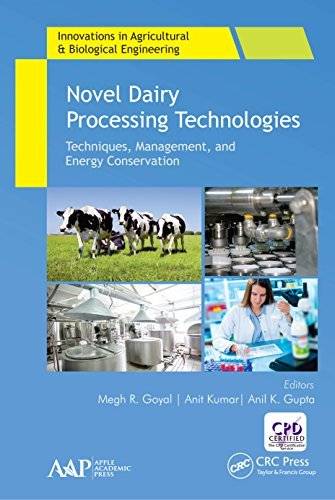Novel Dairy Processing Technologies: Techniques, Management, and Energy Conservation (Innovations in Agricultural & Biological Engineering) by Megh R. Goyal, Anit Kumar, Anil K. Gupta
2018 | ISBN: 1771886129 | English | 340 pages | PDF | 4 MB
2018 | ISBN: 1771886129 | English | 340 pages | PDF | 4 MB
Milk is nature’s perfect food (lacking only iron, copper, and vitamin C) and is highly recommended by nutritionists for building healthy bodies. New technologies have emerged in the processing of milk. This new volume focuses on the processing of milk by novel techniques, emphasizing the conservation of energy and effective methods. This book is divided four parts that cover:
-applications of novel processing technologies in the dairy industry
-novel drying techniques in the dairy industry
-management systems and hurdles in the dairy industry
-energy conservation and opportunities in the dairy industry
This book presents new information on the technology of ohmic heating for milk pasteurization. It goes on to provide an overview of the commercial thermal, non-thermal technologies, and hybrid technologies for milk pasteurization. There are non-thermal technologies such as pulse light, irradiation, ultra violet treatment, etc., that can be used in combination with other technologies for the processing of milk and milk products. This hybrid technology can provide multiple benefits, such extended shelf life, reduced energy costs, reduced heat treatment, and better organoleptic and sensory properties. The book also describes the different aspects of food safety management used in dairy processing.
The book also looks at recent advances in microwave-assisted thermal processing of milk and the effects of microwaves on microbiological, physicochemical, and organoleptic properties of processed milk and milk products. Technological advances in value addition and standardization of the products have been reported, but well-established processes for mechanized production are recommended in the book for a uniform quality nutritious product produced under hygienic conditions.
This new volume will be of interest to faculty, researchers, postgraduate students, researchers, as well as engineers in the dairy industry.



